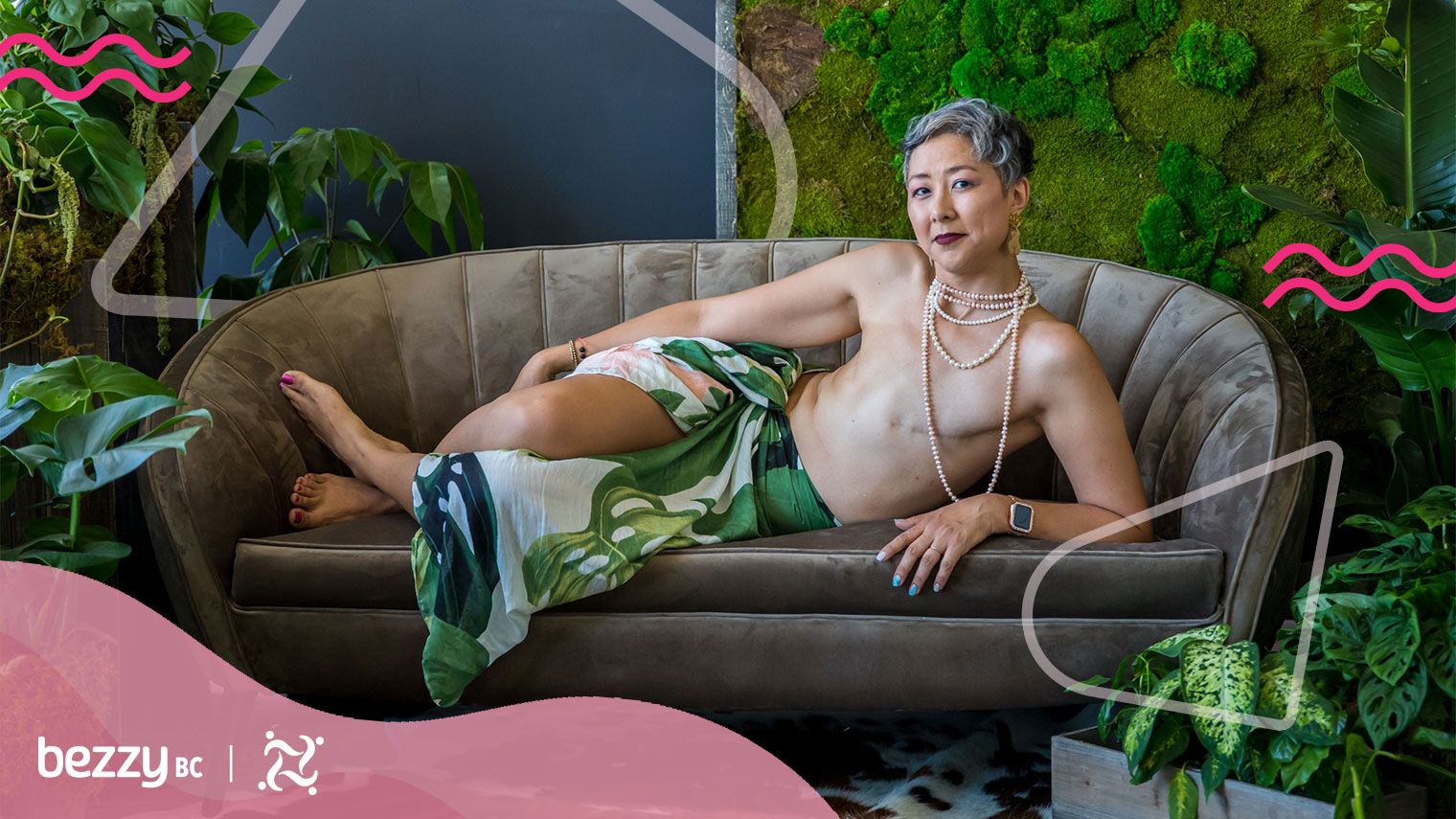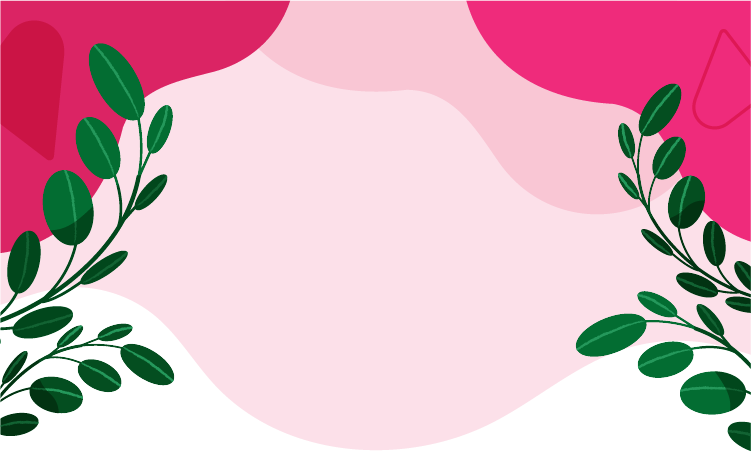Staying Flat and Finding My Way to Advocacy
October 03, 2022
Content created for the Bezzy community and sponsored by our partners. Learn More

Collage design by Ryan Hamsher; Photo contributed by Ginny Shudlick
There’s a lot of work to be done to make sure women — not just Asian women, but all women — are heard and their wishes respected.
In April 2019, when I was 41, I found a lump in my right breast while taking a shower. It was one of those times when I consciously thought, It’s probably nothing. But in the back of my head, I knew I had to get to the doctor.
I was due for a pap smear anyway and mentioned it during the appointment. The doctor also felt like it would turn out to be nothing but scheduled a mammogram the following week. After the mammogram, my doctor recommended an ultrasound because I had dense breasts.
That led to a biopsy, but unfortunately, they didn’t get enough of the tumor, so they had to go in for a second biopsy. I could tell from the faces of the mammogram technician and ultrasound technician what the diagnosis would be.
After talking through all the decisions with a breast surgeon and medical oncologist, I opted for a bilateral mastectomy. I did meet with a plastic surgeon, who said I could do reconstruction later, but I decided to stay flat. The only other procedure that came after was to have my ovaries and fallopian tubes removed to lower my cancer risk, which put me into medical menopause.
Finding the strength to become an advocate and admit when I need help has been huge for me.
Becoming a “flattie baddie” has been interesting. During my first conversation with the plastic surgeon, we were talking about all my options, including implants. He made a joke that if I got that done, I’d never be a professional rock climber. I knew he was kidding, and I’m not a rock climber, but something about that comment didn’t feel right. It made me think about limitations, and I bristled at that.
Also, there was no guarantee of the results. I know people who have had multiple procedures, and I just wanted it all to be done.
But what really solidified the decision for me was when I met other breast cancer patients in person. One woman who was flat was rocking a white V-neck shirt, and she looked amazing. It helped reinforce that it was the right thing for me, too.


The importance of representation
As an Asian American woman in my early 40s, I’ve seen the effects of not having doctors who look like me from the start. Everyone tends to default to the white, 65-year-old woman as a breast cancer patient. I had to do a lot of self-advocacy to get the care I needed.
For example, in the infusion room, everyone else was getting visits from nutritionists and social workers, but not me. I knew there was a social worker available, so I specifically asked for support after treatment. I also ended up searching for my own support group online.
Part of my role as an advocate is about visibility. I want those in healthcare to see people who look like me. There’s a perception that Asian women don’t get breast cancer, and obviously, that’s not true. Another perception is that they don’t want to be flat as an option, and again, that’s obviously not the case.
I hear stories about Asian women who ask for flat closure and doctors say, “She doesn’t know what she wants,” and leave extra flaps anyway. There’s a lot of work to be done here in trying to make sure women — not just Asian women, but all women — are heard and their wishes respected.
Turning to advocacy
While I had support through my diagnosis, treatment, and recovery, there were many mental health aspects that were challenging. The most surprising was survivorship — I didn’t expect it to be as difficult as it is.
Once you’re finished with treatment and thrown back into the world, that’s when the WTF moment comes in. I don’t think oncologists and other health professionals address that part as well as they can.
What’s really helped me is having a good group of women who are also cancer survivors. We all help each other, especially with the anxiety that comes with knowing there could be a recurrence.
Part of my role as an advocate is about visibility. I want those in healthcare to see people who look like me.
Another thing that’s helped is antidepressants. I’d been taking so many medications to deal with side effects that by the time antidepressants were recommended to me, they seemed like just one more prescription. I initially started to take them for hot flashes because of the menopause, but they’ve provided some relief emotionally as well.
I was angry before, and anxious, and I notice a difference with those. If you need help, take the help.
Finding the strength to become an advocate and admit when I need help has been huge for me. I try not to dwell on the possibility of recurrence. But like a lot of people, when you brush up against your own mortality, it gives you more purpose afterward.
I have more of an appreciation for what I’m doing. I’m less focused on my job and more on my family and advocacy work, and I have a greater sense now that nothing is guaranteed.
This is When You See Us, a series in partnership with our friends at For the Breast of Us, highlighting the experiences of Women of Color in the breast cancer community. Together, we believe that hearing the stories of women who look like you and can relate to your experiences has the power to foster community, resiliency, and hope.
Fact checked on October 03, 2022


Like the story? React, bookmark, or share below:
Have thoughts or suggestions about this article? Email us at article-feedback@bezzy.com.